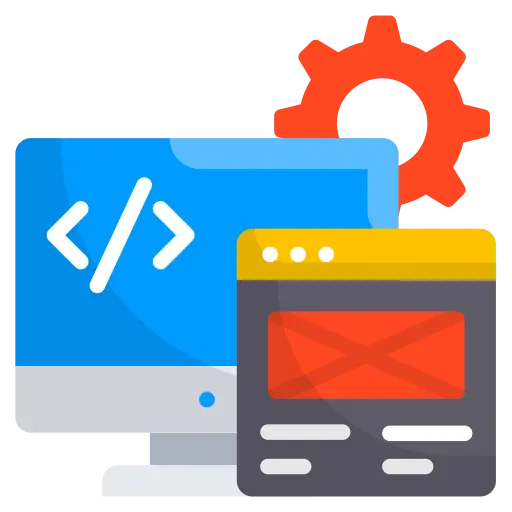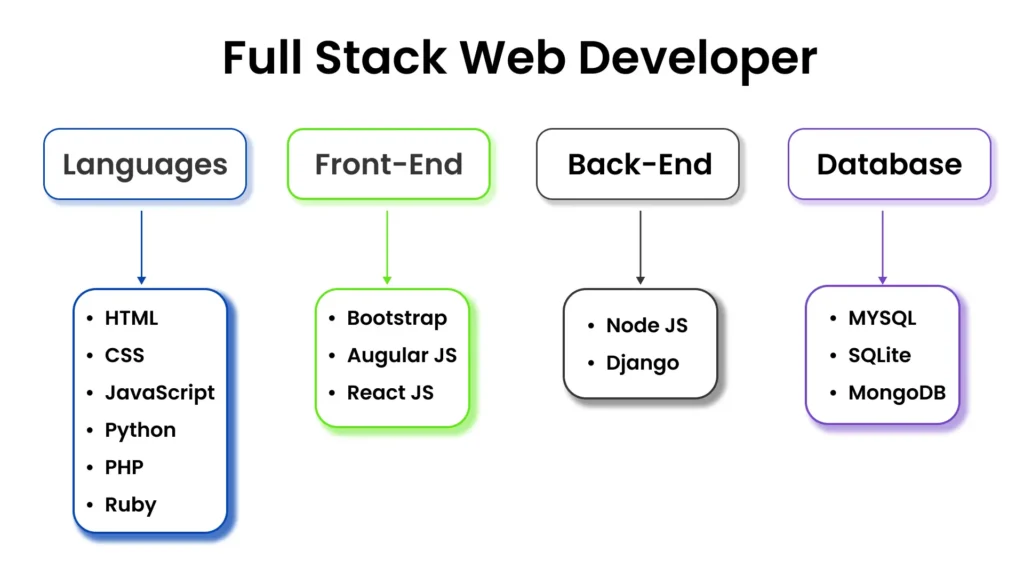
What Is Full Stack Development?
Introduction to Full-Stack Development
In today’s fast-paced digital world, the demand for technology professionals is at an all-time high. Among the myriad roles in the tech ecosystem, full-stack development has emerged as one of the most versatile and sought-after skills. But what exactly does full-stack development entail? Is it just about coding, or does it encompass more? For Indian students venturing into the world of software development, understanding this role can open doors to exciting career opportunities.
Full-stack development is the art and science of managing both the front-end (what users see) and the back-end (how the system works) of a web application. It requires a well-rounded understanding of multiple programming languages, frameworks, and tools. In essence, full-stack developers are the jack-of-all-trades in the software world, capable of building a complete web application independently.
What Does Full-Stack Development Entail?
To truly understand the role of a full-stack developer, let’s break down its key components:
The Front-End
The front-end is the user-facing part of a website or application. It involves creating visually appealing, interactive, and user-friendly interfaces. Key technologies used in front-end development include:
- HTML (HyperText Markup Language): The backbone of any web page, defining its structure and content.
- CSS (Cascading Style Sheets): Enhances the visual appeal of web pages with styling and layout designs.
- JavaScript: Brings interactivity to web pages, such as dynamic content loading and animations.
Modern frameworks like React, Angular, and Vue.js have further streamlined front-end development, allowing developers to build responsive, high-performing user interfaces efficiently.
The Back-End
While the front-end is all about presentation, the back-end is about functionality. It manages the server, database, and application logic, ensuring that data flows smoothly and securely. Back-end development involves:
- Programming Languages: Popular choices include Node.js, Python, Ruby, and Java.
- Databases: Tools like MongoDB, MySQL, and PostgreSQL store and manage data.
- APIs (Application Programming Interfaces): Connect the front-end with the back-end, facilitating seamless communication.
The Database
The database is the heart of any web application. It stores user information, application data, and other critical records. Databases can be relational (SQL-based) or non-relational (NoSQL). MongoDB, a NoSQL database, is highly favored for its flexibility and scalability.
DevOps and Deployment
Full-stack development isn’t just about coding; it’s also about deploying applications. Tools like Docker, Kubernetes, and cloud platforms such as AWS and Azure are essential for deploying scalable applications.

Skills Required to Become a Full-Stack Developer
Being a full-stack developer requires a diverse skill set that blends creativity, analytical thinking, and technical expertise. Here are the essential skills:


Career Path of a Full-Stack Developer in India
The journey of a full-stack developer often starts with learning basic programming and gradually mastering advanced tools and technologies. Here’s a typical career roadmap:
Entry-Level Roles
As a fresher, you might begin as a junior developer, focusing on either front-end or back-end tasks. This phase involves understanding project requirements and learning to work in teams.
Mid-Level Roles
With 2-3 years of experience, developers often transition to full-stack roles. At this stage, they take on more responsibility, managing both the client and server sides of applications.
Senior Roles
Senior full-stack developers lead teams, design application architectures, and ensure that projects meet quality standards. They often mentor junior developers and stay updated with emerging technologies.
Trending Internships
Full Stack Web Development Internship Program
Internship with Stackskool
Data Analytics Internship
Internship with Stackskool
Digital Marketing Internship
Internship with Stackskool
Top Picks & New Blogs
objectives of database management system
what is the correct html for adding a background color
Advantages of Becoming a Full-Stack Developer
Full-stack development offers numerous advantages that make it a rewarding career choice for Indian students:
- Versatility
Full-stack developers can work on various aspects of a project, making them indispensable in any tech team.
- High Demand
The tech industry’s growing reliance on web and mobile applications ensures a steady demand for skilled full-stack developers.
- Competitive Salaries
In India, full-stack developers earn lucrative salaries, with entry-level professionals making ₹5-7 lakhs per annum and experienced developers earning significantly more.
- Flexibility
The diverse skill set of a full-stack developer opens doors to freelancing and remote job opportunities.
Why Full-Stack Is Gaining Popularity
The growth of the internet, mobile apps, and online businesses has skyrocketed the need for developers who can seamlessly integrate front-end and back-end functionalities.
Indian tech companies and startups are especially keen on hiring full-stack developers, as they offer cost-effective solutions by reducing dependency on separate teams.
Moreover, the tech landscape in India is rapidly evolving, with a strong focus on digital transformation. From e-commerce platforms like Flipkart, Amazon to ed-tech giants full-stack developers are integral to shaping their success. Companies prefer professionals who can adapt quickly, and full-stack developers fit the bill perfectly.
Challenges in Full-Stack Development and How to Overcome Them
While full-stack development is rewarding, it comes with its challenges:
Tools and Resources for Aspiring Full-Stack Developers
- Development Tools: Use Visual Studio Code, Git, and Chrome DevTools for efficient coding and debugging.
- Frameworks: Learn React and Bootstrap for front-end, and Express.js for back-end development.
- Databases: Practice with MongoDB (NoSQL) and MySQL (SQL) for managing data.
- Testing Tools: Use Postman for API testing and Jest for front-end testing.
- Online Learning: Explore courses on Udemy, Coursera, and StackSkool for full-stack development.
- Practice Platforms: Improve coding skills on HackerRank, LeetCode, and CodeChef.
- Deployment Tools: Use Docker and Heroku for deploying applications effectively.
- Communities: Join GitHub, Stack Overflow, and Reddit for networking and collaboration.
Conclusion
Full-stack development is a dynamic and fulfilling career choice for Indian students. It equips you with the skills to build end-to-end applications, opening up endless possibilities in the tech industry. By mastering the art of integrating front-end and back-end technologies, you can become a valuable asset in any organization.
If you’re passionate about technology, enjoy solving problems, and aspire to work in a high-demand field, full-stack development is the perfect career path for you. Start learning today and embark on a journey that promises growth, innovation, and success.
Frequently Asked Questions
Full-stack development combines both front-end (what users interact with) and back-end (server, database, and logic) development. Unlike specialists who focus on one side, full-stack developers handle the entire application lifecycle, making them versatile contributors to any project.
Beginners should start with HTML, CSS, and JavaScript for front-end development. For back-end development, Node.js (JavaScript), Python, or Java are great options. Learning SQL for relational databases or MongoDB for NoSQL databases is also essential.
Popular frameworks include React and Angular for front-end, and Express.js (Node.js), Django (Python), and Spring Boot (Java) for back-end development. These frameworks simplify coding, improve efficiency, and support scalable application development.
No, a degree is not mandatory. Many successful full-stack developers are self-taught or have gained skills through online courses, coding bootcamps, and hands-on projects. What matters most is your practical knowledge and ability to build and deploy applications.
Full-stack developers often face challenges like keeping up with evolving technologies, managing time across front-end and back-end tasks, debugging complex applications, and maintaining code quality. Overcoming these requires continuous learning, good organizational skills, and leveraging tools like project management software and debugging tools.
